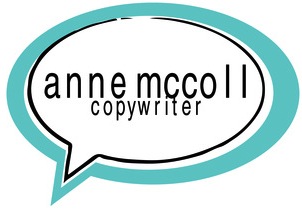The last few weeks my social media feed has been filled with lists of brands to avoid. People are renewing their commitment to spending their hard-earned dollars with brands that align with their values.
That got me thinking. As a San Diego freelance copywriter, I haven’t updated my values on my website for a while. So for my first draft I am going with these that cover a lot on how to communicate:
Be intentional.
Inject your humanity.
Listen, then speak.
If you haven’t revisited your business values in a while, maybe it’s time. I'll admit, it's easy to list 10 values because, well, a lot of things matter. The challenge? Narrowing it down to 3 to 5 values that actually guide how you show up and make decisions. Because the fewer you have, the more weight each one carries.
Your values shouldn’t just be a feel-good exercise. They should be the backbone of your business—shaping decisions, interactions, and how people experience your brand. If you’re feeling stuck, here are three simple frameworks to help you define your values in a way that’s real, actionable, and actually useful.
1. The "If-Then" Framework
Your values should help you guide your actions. This framework forces you to spell out how your values impact daily choices by turning them into an "If-Then" statement.
Value: Be Intentional
If we say yes to something, then it means saying no to something else—so we choose wisely.
Value: Inject Your Humanity
If the message doesn’t make us feel something, then we go back and make it bolder, clearer, and more human.
Value: Listen. Then Speak.
If we are faced with a barrage of information and opinions, then we take time to evaluate before deciding.
See how this makes the values useful? They’re no longer just feel-good phrases; they’re decision-making tools.
2. The "Hell Yes or Hard Pass" Framework
Because your values are a filter, not a feel-good exercise.
A strong value helps you say yes to the right things and walk away from the wrong ones. For each value, define what’s a HELL YES and what’s a HARD PASS for your business.
Value: Be Intentional
Hell yes to making decisions about time and resources that align with our well-being.
Hard pass on continuous yessing, that ultimately end up in burnout.
Value: Inject Your Humanity
Hell yes to writing like a human, showing personality, and letting people see the real us.
Hard pass on robotic corporate jargon, generic messaging, and being so polished we lose authenticity.
Value: Listen. Then Speak.
Hell yes to gathering input from clients and team members before making decisions.
Hard pass on assuming we know what someone needs before they tell us.
This approach makes it painfully clear when something aligns—or when it’s a no-go.
3. The "Tell a Story" Framework
Because people don’t remember bullet points. They remember moments.
Stories breathe life into your values. Instead of listing your values like a corporate manual, tell a story about a time when your business (or you) lived that value.
Value: Be Intentional
How we practice it: A client once came to us in a rush, wanting a full rebrand in just a few weeks. Instead of jumping in blindly, we took a step back and asked the tough questions. Was this the right time? Was a full rebrand even necessary? After some deep strategy work, we realized a few small but powerful adjustments would have a bigger impact than an overhaul.
Value: Inject Your Humanity
How we practice it: We once worked with a company that had amazing products but sounded like a soulless corporate entity in their messaging. No one could relate to them. So, we scrapped the jargon and reworked their tone to sound like an actual human talking to another human. Almost immediately, engagement skyrocketed. People don’t connect with businesses—they connect with other people.
Value: Listen. Then Speak.
How we practice it: A business owner came to us convinced they needed a flashy marketing campaign. But instead of selling them what they thought they needed, we took the time to listen. We dug into their audience, their past efforts, and their goals. Turns out, their real problem wasn’t marketing—it was audience alignment. So, we shifted strategies, focusing on building stronger connections before amplifying the message. The result? More meaningful engagement, not just more noise.
I hope this helps. I will work on reworking the verbiage on my values in the next few weeks. I would love to see yours.




